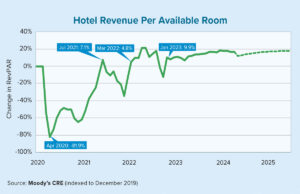In the mortgage industry, print and digital advertising often form the backbone of any marketing campaign. Effective advertising can be critically important not only for generating more business but also for building your distinctive brand.
Poorly constructed ads, however, can be ineffective. In some cases, they can convey the wrong message or damage your company’s reputation. Whether you are appealing to clients directly or speaking business to business, some common principles can be applied in the creation of good advertising.
When it comes to advertising in the mortgage industry, it often can be challenging to develop a captivating ad. Unlike other types of consumer goods, companies that are trying to promote loan programs, mortgage services or software often don’t have exciting imagery to rely upon when advertising their products.
Let’s face it — mortgages aren’t exactly a sexy product. Also, depending on which part of the industry your company falls within, your ad must include legal disclaimers, licensing information and a plethora of other verbiage to ensure your ad complies with industry regulations. So, with all of that in mind, how can you develop a good print or digital advertisement that people will notice?
Audience consideration
It should go without saying that you should be thinking about your audience when developing any advertisement. Unfortunately, ads often run in our industry in which the advertiser clearly thought they had a clever idea but developed a campaign with no real consideration for their potential clients or business partners.
Just because you think something is catchy or witty does not mean it will resonate with your customers. When creating an appealing ad, it’s important to take your blinders off and try to view it from the perspective of your target audience, whether that be commercial mortgage brokers or direct lenders appealing to investors.
Think about which concepts, including imagery and verbiage, would best capture the attention of your future customers. For example, if your company provides mortgages for investors in single-family rental homes, consider graphics and language that capture the experience of making a loan for an investment property smooth and seamless.
A good ad tells the viewer a story that they can relate to, thus enticing them to use your products or services. Different areas of the mortgage industry may require drastically different stories. There is no one-size-fits-all template to create the perfect ad, so knowing your audience is critical.
You need to consider all members of your prospective audience. Although it may seem like an easy play to create a gimmicky ad that appeals to a portion of your potential customers, steer clear of any concepts that would potentially alienate a segment of your target audience.
For example, some companies have tried to lean into the fact that the mortgage industry is predominantly male, and have published borderline or blatantly sexist ads to capture people’s attention. While these types of ads will get eyes on them, mainly because of their shock value, it does not mean they will generate business. The same problem arises from ads that use cultural or ethnic stereotypes to attract attention.
More often than not, these types of ads are more damaging than they are helpful for a company’s reputation and can have long-lasting, negative effects. If there is any concern that a concept may be questionable, scrap it.
Solid structure
Creating a good ad takes much more finesse than simply slapping some words on an image and hoping for the best. While good design is another topic in itself, all good ads tend to have the same components, regardless of how they are arranged on the page. When developing an ad, you should think about the following pieces: a headline or title, supporting copy and a call to action.
The one question you should ask when developing a headline for an advertisement is, does it address a common problem, concern or need that a potential customer may have? This is particularly important because a viewer often will only skim the headline or title of your ad before deciding whether it’s worth their time to read the additional content on the page.
Also, in the case of small banner ads and digital advertising with limited space, a headline may be the only prominent text you are able to include. You want your ad headline to capture a potential customer’s attention and make them realize they have a need for whatever you’re selling.
From there, develop your supporting copy. This content is meant to address how your product or service will fill the customer’s need and make their life easier. Focus on what differentiates your product or service from your competitors. This is the part of the ad where you get to highlight all of your product’s major selling points. You can craft as much or as little supporting copy as you need. There is no “right amount” as long as it gets your points across.
Call to action
Don’t forget to include a compelling call to action. Think of it this way: In a perfect scenario, what do you want someone to do after they have seen your ad?
The goal may be to get a potential customer to email your company for more information. It may be for them to make a call to connect with a dedicated representative or schedule a product demo. It could even be something as simple as visiting your website to learn more details. A call to action does not have to be a hard sell for your product or service, especially when your company is using other marketing channels to drive business. It is important to remember that this ad is only one piece of the puzzle.
Whatever you want potential customers to do, it should be abundantly clear what the next step is to engage with your company. You cannot assume that a borrower or business partner will figure out the next step on their own.
Without an apparent call to action, you are almost guaranteed to lose the customer. This is especially important for digital advertising. Even if you assume that the next logical next step would be to click on the ad and further explore your website, you should always include the specific link and call to action, such as “click here to learn more.” If you don’t entice the viewer to take this step, you could lose out on what might be an easy sell.
One of the biggest mistakes that advertisers make when running a new ad is failing to make sure the content fits within the broader scheme of their company’s brand.
Brand awareness
One of the biggest mistakes that advertisers make when running a new ad is failing to make sure the content fits within the broader scheme of their company’s brand. Especially in the commercial mortgage industry, so many companies take generic images of buildings, put their logo on it and think this will suffice.
While including your logo certainly helps, these types of ads are just like the images used to create them — generic. These types of ads tend to blend together, making it difficult for the viewer to remember a specific company.
When developing a new ad — or any branded marketing materials, for that matter — it is crucial that the content also reflects your brand identity. A good ad should convey the general aesthetic that your company has developed to improve brand recall. Try to incorporate related imagery and brand colors that are cohesive with other marketing pieces your company uses. Even if a viewer only quickly glances at your ad, they will recognize and remember your company. That is the goal.
Keep in mind that your ad copy should match your brand voice. Consider tone, formality and the use of certain language as you craft ad content. Just as people have certain mannerisms and ways of speaking, so does your brand. You should have a unified brand voice that appears not only in your print and digital ads but throughout all company content regardless of the marketing channel.
● ● ●
Creating a good ad is by no means easy, but thankfully there is a method to the madness. While it may seem like a lot of work to create something that may only take up a single page, taking the time to learn how to develop more impactful advertising is something that will ultimately repay the investment many times over. ●
Author
-

Erica LaCentra is chief marketing officer for RCN Capital. She is responsible for planning, developing and implementing the firm’s marketing plan as well as overseeing its marketing department. After joining RCN Capital in 2013, LaCentra led a strategic rebranding to position the company for nationwide expansion. Her ongoing efforts have rapidly expanded RCN’s customer base and elevated the company to a national brand. Reach LaCentra at (860) 432-4782.
View all posts







